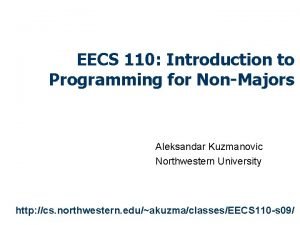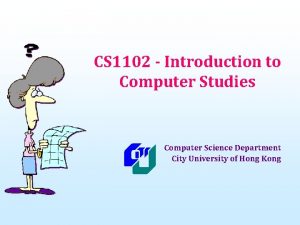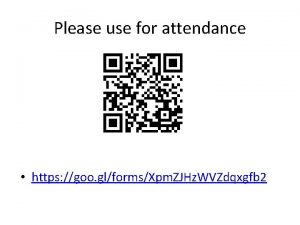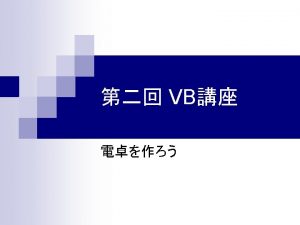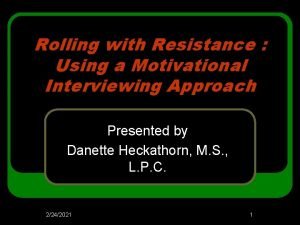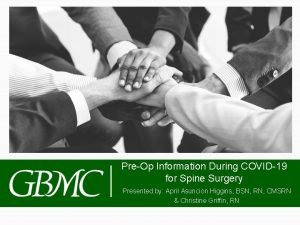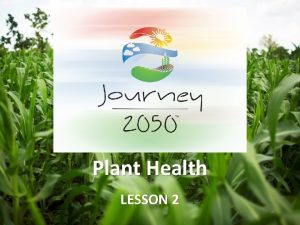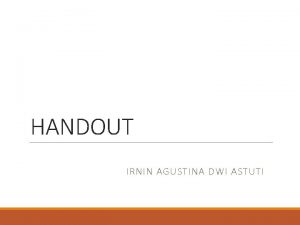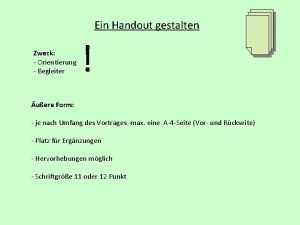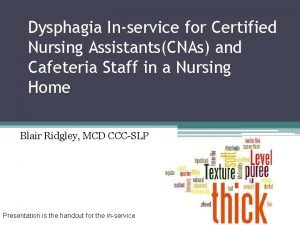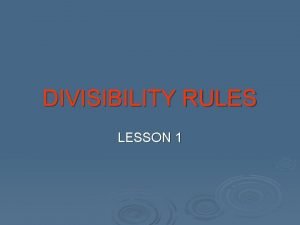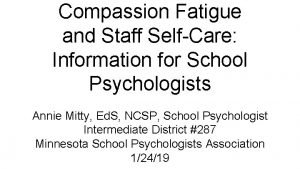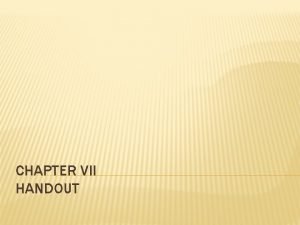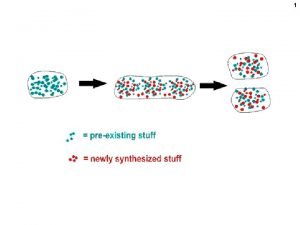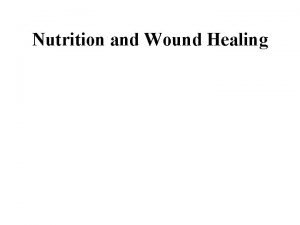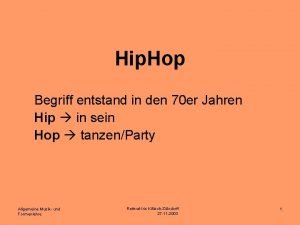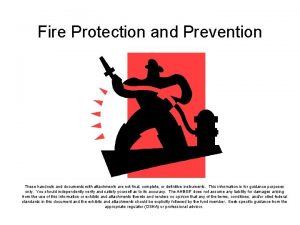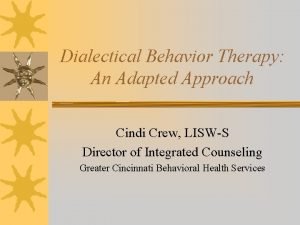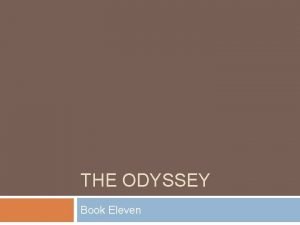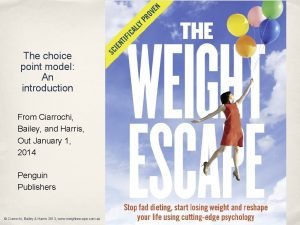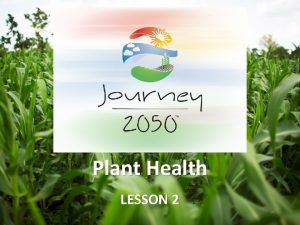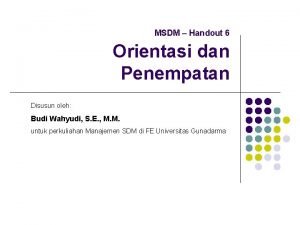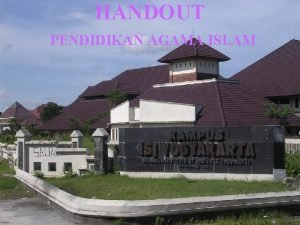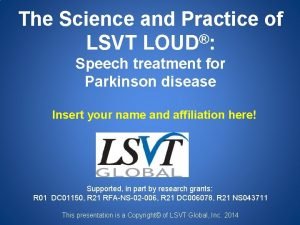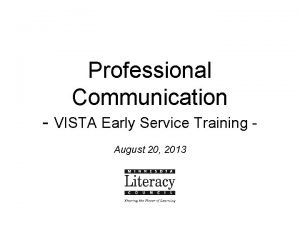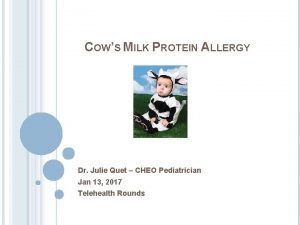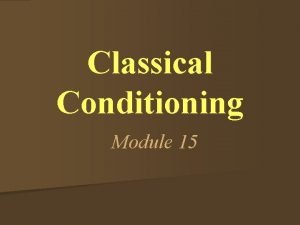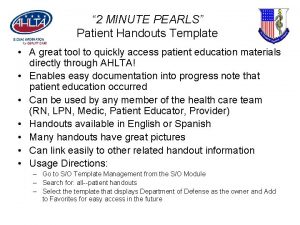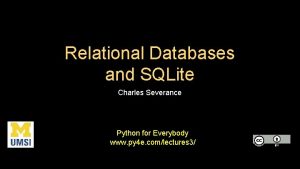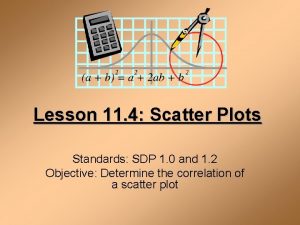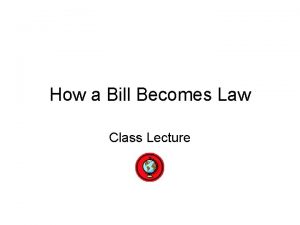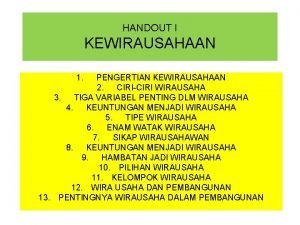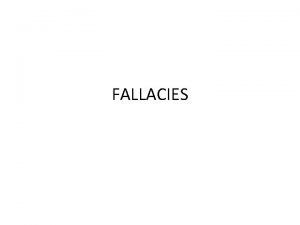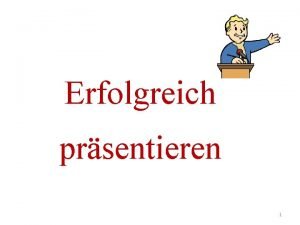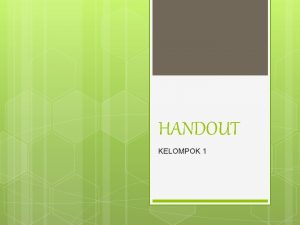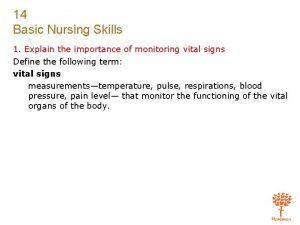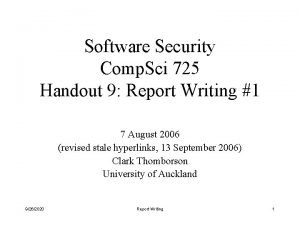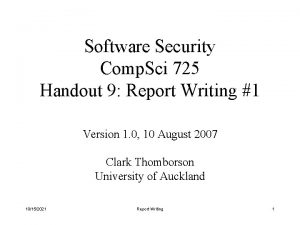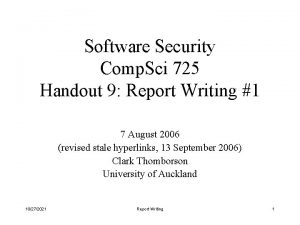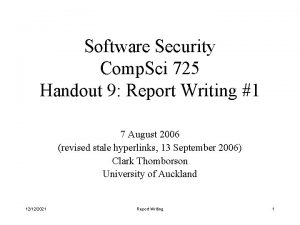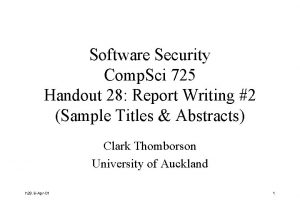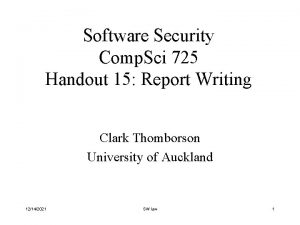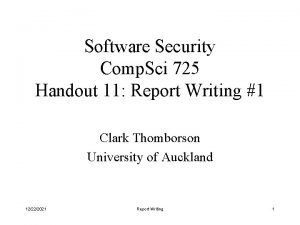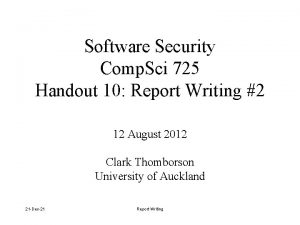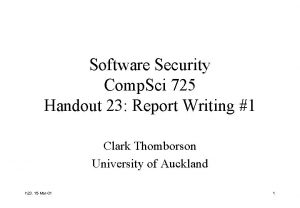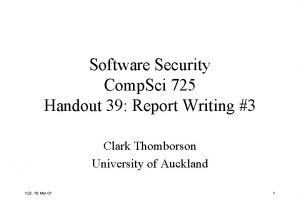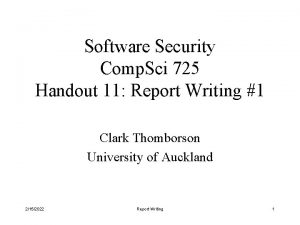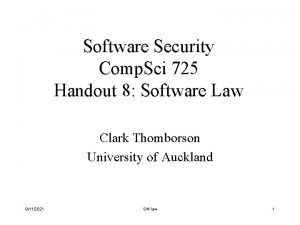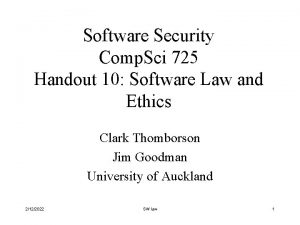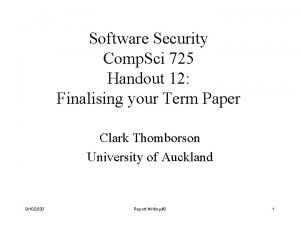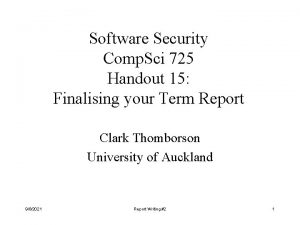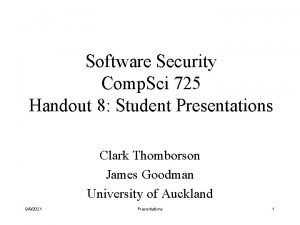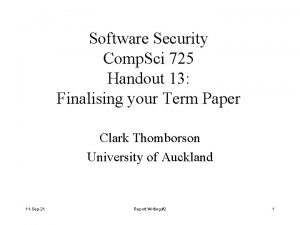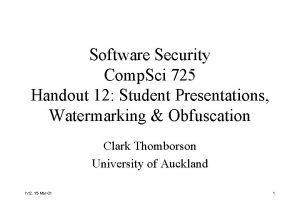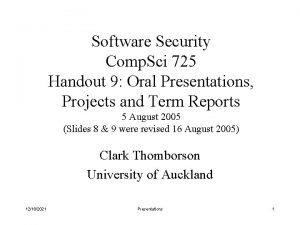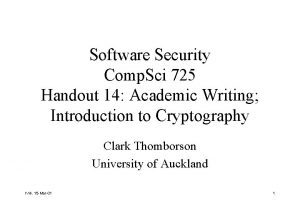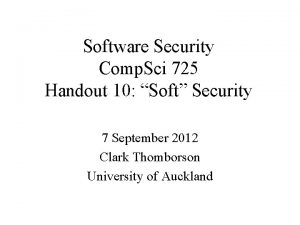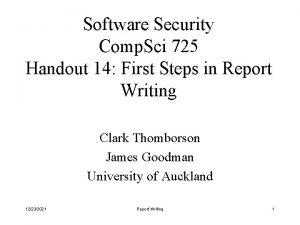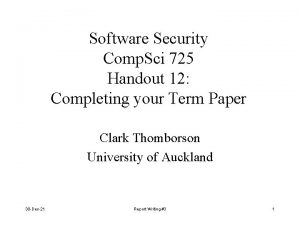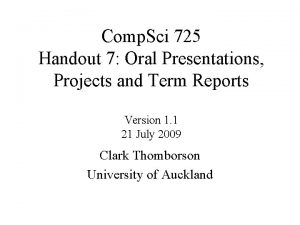Software Security Comp Sci 725 Handout 9 Report
































![Logical Communiation [Eisenberg, Writing Well for the Technical Professions, 1989] • “Communication that is Logical Communiation [Eisenberg, Writing Well for the Technical Professions, 1989] • “Communication that is](https://slidetodoc.com/presentation_image_h2/1ba44f172f07675369c696d068aea932/image-33.jpg)













- Slides: 46

Software Security Comp. Sci 725 Handout 9: Report Writing #1 Version 1. 0, 10 August 2007 Clark Thomborson University of Auckland 12/19/2021 Report Writing 1

Suggested Search Process for COMPSCI 725 Term Papers 1. Find at least one “good” source, by keyword search or browsing or … 2. Find more good sources by… a) Finding sources that cite your “good” source (use http: //citeseer. nj. nec. com/cs or Web of Science). b) Finding sources that are cited by your “good” source (use its bibliographic information) c) Finding other sources written by the author(s) and co-authors of your “good” source (use www. google. com to find their website; use http: //www. informatik. uni-trier. de/~ley/db/ to find their pubs) d) Identify keywords and phrases, use these to search with Google scholar, library databases. e) Look at “nearby” articles: same journal, same conference. 3. Narrow your topic, to limit the number of relevant sources. 4. Use scholarly (archival) source materials. Don’t rely on something you find on someone’s webpage! 12/19/2021 Report Writing 2

Citation Style for COMPSCI 725 • We recommend the IEEE style (http: //standards. ieee. org/guides/style/section 7. html#992) – This is similar to the Chicago style (http: //www. library. auckland. ac. nz/instruct/ref/chicago. htm). – You may use ACM (http: //www. acm. org/pubs/submission. htm), MLA, or any other well-defined style, if you prefer. – See http: //www. library. auckland. ac. nz/instruct/ref. htm. – Be consistent: all your references must be in one style! • List your references in alphabetical order (by author surname) at the end of your report, in a References section. – Number your references (1, 2, 3, . . . ), or assign acronyms (e. g. CT 99 for a paper by Collberg and Thomborson that was published in 1999). – Every item in your reference list must be cited somewhere in your report. – Usually it is appropriate to use an author’s name (or up to two authors’ names) when making a citation in your report, for example: “Collberg and Thomborson [CT 99] propose. Report …”Writing 12/19/2021 3

Citations to Web-Based Documents • http: //www. library. auckland. ac. nz/instruct/ref/chicago. htm contains the following example of citing a web-based document in the Chicago Style (15 th ed. , 2003): Lindblom, Charles E. “The Science of ‘Muddling Through’. ” Public Administration Review 19, no. 2 (1959): 79 -88, http: //links. jstor. org/ sici? sici=00333352(195921)19: 2<79: TSO">2. 0. CO; 2 -7 (accessed October 26, 2006) • Note that I have introduced a linebreak in this URL – otherwise it would look terrible! – Use a DOI if possible. • • The IEEE style is similar to the Chicago style, but the publication date appears at the end of an IEEE-style bibliographic entry. IEEE journals are unlikely to accept a web-based document as a citable source, and so there is no defined bibliographic style for such sources, but. . . if I were using the IEEE style for a tech report or conference article, I might cite the Lindblom source as follows Lindblom, Charles E. “The Science of ‘Muddling Through’. ” Public Administration Review 19: 2, pp. 79 -88, 1959, http: //links. jstor. org/ sici? sici=0033 -3352(195921)19: 2<79: TSO">2. 0. CO; 2 -7 (accessed October 26, 2006) • Cite only archival sources! (Is the Lindblom article still available at this URL? ) 12/19/2021 Report Writing 4

Woodford’s 25 Steps for Report Writing (reduced to 18) 1. 2. 3. 4. 5. Decide on a topic Write the title & synopsis Review requirements Decide on the basic form of the article … (see handout) 12/19/2021 Report Writing 5

2. Topic, Title, Synopsis • A topic is a “subject that people think, write or talk about. ” [Thorndike-Barnhard Dictionary, 1952]. – Woodford thinks a scientific topic should be in question-answer format: “What question [have you] asked, and what are [your] conclusions? ” • Have you chosen a topic for your term paper? – Assignment 1: one-sentence proposal, due Friday 17 August. • A title should be “… an effective guide for scientists rapidly scanning lists of titles for information relevant to their interests. ” (Woodford’s Step 22, p. 104) • A synopsis is an explanation of your “projected paper in definite and concise terms, as though to a friend who asks [you] at some chilly street corner what [you] have been up to recently. ” (Woodford’s Step 5, p. 15) • Writing a draft title and synopsis at an early stage will “… clarify [your] aims and intentions. ” 12/19/2021 Report Writing 6

Abstracts vs. Synopses • An abstract “… must stand alone and be intelligible without reference to the text. ” (Woodford’s Step 22, p. 105. ) • Your final title and abstract must be written “… from the reader’s point of view. ” – What is the audience for your draft title and synopsis? • A synopsis is written in a less formal style than an abstract. – The audience for a synopsis is immediate and intimate. – The audience for an abstract is archival and formal. • By Friday 14 September (the Friday after term break), students writing term papers should send me email containing – Assignment 2: your draft title, your synopsis, and your references. – This email should be text-only (no attachments, please). – I’ll give you some feedback on your references. 12/19/2021 Report Writing 7

More Due Dates • Practical work on term projects should be completed by 21 September (so that you have one month to prepare your writeup). • Assignment 3: On 28 September, send me the title page of your term paper or project report, and an outline. – Your title page may be published on the class website, if you give me permission to do so. – I will give you feedback on your outline and title page. – Your title page should be in HTML, and should include the title of your paper, the date, class number, class name, author’s name, and abstract. • On 19 October (the last day of lectures) you must submit your final version of your term paper or project report. – Your complete paper will be published on the class website – if you submit it by email attachment, and if you give me permission to publish it. 12/19/2021 Report Writing 8

Sample Titles & Abstracts • The next two slides contain titles & abstracts from term papers written by students in a prior offering of Comp. Sci 725. – What question did they ask, and what are their conclusions? • Is it likely that – Each title is “… a fitting and worthy representative of the [term paper’s] contents”? – Each abstract “within the space allowed, … convey[s] the purpose, general experimental design, conclusions, and if possible, significance” of the student’s term paper? • Note: term papers don’t really have an “experimental design. ” Instead you will use library research, rather than scientific experimentation, to discover “an answer” to your topic question. 12/19/2021 Report Writing 9

Software-Based Interlocks for Software Tamper-Detection By Andrew Paxie Software-based interlocks may be used to improve the tamper-detection of software. Interlocks ensure that undesirable conditions are avoided or that events are correctly sequenced. Three example interlocks – batons, Aucsmith’s integrity verification protocol, and Kerberos authentication – illustrate the concept in relation to software tamper-detection. Question? Conclusions? 12/19/2021 Report Writing 10 Slide Date: 18 October 2000

The Linux 2. 4. 0 Capability Security System Colin Coghill, October 2000 The UNIX operating system "setuid" security feature is inadequate for modern demands. I provide some background to this claim, then present the results of my investigation into a solution implemented in the latest development version (2. 4. 0 -test 9) of the Linux operating system. I finish with some ideas for future work. Question? Conclusions? 12/19/2021 Report Writing 11

More Examples and Practice • For more titles and abstracts, see http: //www. cs. auckland. ac. nz/compsci 725 s 1 c/archive/compsci 725 fc/assignments/termpapers. htm http: //www. cs. auckland. ac. nz/compsci 725 s 1 c/archive/compsci 725 fc/archive/2001/assignments/ http: //www. cs. auckland. ac. nz/compsci 725 s 1 c/archive/compsci 725 fc/archive/2000/assignments/ • Try to write an abstract for a paper that is missing one, for example Cohen’s “Computer Viruses – Theory and Experiments”. 12/19/2021 Report Writing 12

How the University Library Can Help You with your Term Paper • The following slides are reproduced, with permission, from a presentation made on 21 August 2000 to COMPSCI 725. • Hester is now our University’s Library Manager, Learning Services in Information Commons, x 88050, h. mountifield@auckland. ac. nz. 12/19/2021 Report Writing 13

5 steps to success • Define your topic and identify keywords • Select and use the best research resources • Locate the information you have identified • Evaluate resources • Cite your resources More information: http: //www. library. auckland. ac. nz/instruct/research. htm Comp. Sci 725 s 1 c 14. 14 14 (Mountifield 21. 8. 00)

Information sources Primary information sources • original scientific & technical publications • books, journal articles, conference proceedings, reports, theses, pre-prints, source databases, www • paper / electronic format or both Secondary information sources • finding tools or indexes - references to original information sources • Voyager (library catalogue), bibliographic databases, reviews Comp. Sci 725 s 1 c 14. 15 12/19/2021 Report Writing (Mountifield 21. 8. 00) 15

Electronic Resources LEARN http: //www. library. auckland. ac. nz Resources by subject >> Computer Science • Databases arranged in relevance order bibliographic, full text, combination available from office/lab/library/home • Electronic journals available through Voyager, full-text databases or E-journal option 12/19/2021 Report Writing Comp. Sci 725 s 1 c 14. 16 16 (Mountifield 21. 8. 00)

INSPEC • Most relevant bibliographic database for Computer Science • International scientific and technical literature in: computers and computing electronics electrical engineering • Indexes over 4000 journals and 2000 conference proceedings, as well as books, reports and dissertations • Coverage: 1969 to the present, updated monthly 12/19/2021 Report Writing Comp. Sci 725 s 1 c 14. 17 (Mountifield 21. 8. 00) 17

Web of Science • Well-known international multidisciplinary bibliographic database • Records include the publication's cited reference list or bibliography • You can also search the databases for articles that cite a known author or publication • You can export records directly into End. Note • Coverage: 1990/1995 to the present, updated weekly 12/19/2021 Report Writing Comp. Sci 725 s 1 c 14. 18 18 (Mountifield 21. 8. 00)

Current Contents • Contents pages for 7 000 journals • Disciplines covered include: Engineering, Technology & Applied Sciences • Auto. Alerts for current awareness • Coverage: 1995 to the present, updated weekly 12/19/2021 Report Writing Comp. Sci 725 s 1 c 14. 19 19 (Mountifield 21. 8. 00)

Full-text collections ACM Digital Library: • • Association for Computing Machinery Journals and conference proceedings IEEE EXPLORE: • Institute of Electrical & Electronics Engineers / Institution of Electrical Engineers • Journal articles, conference papers, and technical standards 12/19/2021 Report Writing Comp. Sci 725 s 1 c 14. 20 20 (Mountifield 21. 8. 00)

Evaluating information sources While using databases: Look at title, keywords/descriptors, abstract Publication in hand: Authority: author’s credentials, publisher, detailed bibliography, peer-reviewed journal, www - author, host Scope: national / international, detail / overview, new information / confirm previous information Currency: date, 1 st or revised edition 12/19/2021 Report Writing Comp. Sci 725 s 1 c 14. 21 21 (Mountifield 21. 8. 00)

Evaluating information sources Publication in hand: Objectives / Audience: purpose of publication, fact / opinion, basic / advanced Stability of electronic publications: reliable link, easy & straight forward access More information: http: //www. library. auckland. ac. nz/instruct/evaluate. htm 12/19/2021 Report Writing Comp. Sci 725 s 1 c 14. 22 22 (Mountifield 21. 8. 00)

Citing information sources Bibliography is a list of all sources (print and electronic) from which information has been taken either directly (by literal quotation) or indirectly (by paraphrase). Why needed? • Supply evidence on which author’s statements, arguments, conclusions are based • enable reader to consult original publications • acknowledge author/s from which information was taken 12/19/2021 Report Writing Comp. Sci 725 s 1 c 14. 23 23 (Mountifield 21. 8. 00)

Citing information sources Bibliographic elements needed for bibliography: Books: author/s, year of publication, title, edition, place of publication, publisher, pages, series. Journal articles: author/s, year of publication, title of article, title of journal, volume, issue/number, pages Electronic information: author/s, title of document, title of complete work, version, document date or date of last revision, protocol/site/path/file More information: http: //www. library. auckland. ac. nz/instruct/cite. htm 12/19/2021 Report Writing Comp. Sci 725 s 1 c 24 14. 24 (Mountifield 21. 8. 00)

End. Note • Personal bibliographic database • Create bibliographies - 300 different styles - IEEE, Harvard, Nature • Import references from databases • Site license - software available from Electronic Helpdesk • Tutorials offered by Library and Student Learning Centre More information: http: //www. library. auckland. ac. nz/endnote. htm 12/19/2021 Report Writing Comp. Sci 725 s 1 c 14. 25 25 (Mountifield 21. 8. 00)

Subject Librarian Service Research Consultation (personalised assistance): • • • finding relevant information help in the use of databases managing your bibliography Resource Management • • 12/19/2021 purchasing library materials subject web pages Report Writing Comp. Sci 725 s 1 c 14. 26 26 (Mountifield 21. 8. 00)

Subject Librarian Service cont. Seminars and Tutorials for individuals and groups: • Inspec • Current Contents • Web of Science • End. Note • Voyager • Subject seminar - from search strategies ……. . to referencing techniques. 12/19/2021 Report Writing Comp. Sci 725 s 1 c 14. 27 27 (Mountifield 21. 8. 00)

Current Awareness Customised electronic information service designed to keep you regularly informed of the latest information in your field of interest. Advantages: • access to current and relevant information • automated process • different formats for re-use • SAVING YOU TIME 12/19/2021 Report Writing Comp. Sci 725 s 1 c 14. 28 28 (Mountifield 21. 8. 00)

Document Delivery Inter-Campus Library Delivery Service (ICLDS) • Tamaki Campus Library • Off Campus Storage • Philson Library Interloans when publication is not available in any Uo. A library 12/19/2021 Report Writing Comp. Sci 725 s 1 c 14. 29 29 (Mountifield 21. 8. 00)

Document Delivery Electronic forms on LEARN 12/19/2021 Report Writing Comp. Sci 725 s 1 c 14. 30 30 (Mountifield 21. 8. 00)

If you need any help finding Information or using Library Services: Liz Hardley Subject Librarian for Computer Science l. hardley@auckland. ac. nz 12/19/2021 Report Writing Comp. Sci 725 s 1 c 14. 31 31 (Mountifield 21. 8. 00)

Starting to Write your Term Paper: Review of Steps 1 to 4 1. Decide on a topic (= Woodford’s Step 2) 2. Write the title & synopsis: • Woodford’s Step 5, just discussed 3. Review requirements • This is a combination of Woodford’s Step 6 and 7 4. Decide on the basic form of your paper • • 12/19/2021 This is Woodford’s Step 8. Read Eisenberg pp. 39 -40, 46 -51. Report Writing 32
![Logical Communiation Eisenberg Writing Well for the Technical Professions 1989 Communication that is Logical Communiation [Eisenberg, Writing Well for the Technical Professions, 1989] • “Communication that is](https://slidetodoc.com/presentation_image_h2/1ba44f172f07675369c696d068aea932/image-33.jpg)
Logical Communiation [Eisenberg, Writing Well for the Technical Professions, 1989] • “Communication that is logical is reasoned in the – proposition [the subject to be discussed, or statement to be upheld], – order [placement contributing to the force and beauty of expression, or to the clear illustration of the subject], – interconnection [mutual union], – development [unfolding, advancing], and – disposition [order, method, distribution, arrangement] of its elements. ” • “It is the first, most urgent job of the writer to make the logic apparent. ” 12/19/2021 Report Writing 33

The “Murder Mystery” • In a well-written murder mystery novel, the reader is in suspense until the last page. • “In suspense” means held in doubt and expectation. • Don’t write a technical report that keeps your reader in suspense until the last page. • Few readers will be patient enough to read a mysterious report. • When you write as a technical professional, your reader “needs first and foremost to understand the structure or path of your argument. ” 12/19/2021 Report Writing 34

Comparison and Contrast Format • The topic sentence of a “comparison and contrast” paper, section or paragraph should set forth alternatives for doing something (e. g. growing crystals). • Each section of a comparison and contrast paper should discuss the similarities (comparisons) and differences (contrasts) in the alternative methods. • The first and last sections should give an overview. • The middle sections should each discuss different points of comparison or contrast. • For example, the section on “Preparing a Saturated Solution” contrasts the two methods. Another section, on “Preparing a Seed Crystal” discusses a similarity. 12/19/2021 Report Writing 35

Problem – Solution Format • First, state the “problem” – what is the question being answered by your paper? • Next, outline a “solution” – how the problem can be solved. • Give details of your solution. • Give applications or examples. • End your paper with a critical & appreciative analysis. Is the problem adequately “solved” in all contexts? What “similar questions” might be answered by “similar answers”? 12/19/2021 Report Writing 36

Main Idea – Significance Format • First, explain “what” – your central idea. • Next, explain “so what” – why should anyone care about your idea? • Now that you have the readers’ interest, you can discuss the details. Define your terms carefully, and explain their relationships in a way that illuminates your idea. 12/19/2021 Report Writing 37

Mix and Match! • Don’t be afraid to combine patterns. • Problem-solution + compare-contrast = a paper that discusses two (or more) solutions to a problem, and advises the reader on which solution to adopt. • Main idea-significance + problem-solution = a paper that solves a significant problem. 12/19/2021 Report Writing 38

Woodford’s Form 1. Introduction 2. Materials and Methods 3. Results 4. Discussion This is suitable for any experimental study. Question: Which of Eisenberg’s formats is the “best match” to Woodward’s form? 12/19/2021 Report Writing 39

Moral Rights of an Author • In many (but not all!) legal codes, an author has – The “right of integrity”. An author’s words must not be mutilated or distorted (especially if this would damage the author’s honor or reputation). – The “right of attribution”. The true author has the right to have his/her name on the work, and non-authors may not make false claims of authorship. • These rights are commonly observed in academic ethics, and may be enforced by contracts. • As a student at the University of Auckland, you must honour other authors’ rights of integrity and attribution, especially avoiding false claims of authorship. 12/19/2021 Report Writing 40

“Effectively Using Direct Quotations” U of Richmond Writer’s Web http: //writing 2. richmond. edu/writing/wweb/dq. html • This is a guide to academic style, showing you how to – Make clear attributions to the true author, – Avoid making false claims of authorship for yourself, and – Adjust the author’s words, to suit the context of your writing. • A direct quotation is an exact copy of another person’s words. – You must cite the true author. – You may omit words before, after, or in the middle of the quoted passage. All changes must be clearly marked. – You may alter words, by using square brackets: “[Nero] was the maddest of them all. ” (Smith 32) – You must avoid “misrepresenting the … author’s opinion. ” 12/19/2021 Report Writing 41

When to Use Direct Quotes • “Use a Quotation: – – to emphasize a point you’ve made. to provide an example. to show an author’s intention. to show historical figures spoke or thought. ” [U of Richmond Writer’s Web, “Effectively Using Direct Quotations”, undated. Available http: //writing 2. richmond. edu/writing/wweb/dq. html, August 2006. ] • Which (if any) of these reasons support my decision to directly quote the Writer’s Web on this slide? • My advice for technical writing: – You may use a direct quotation for definitions and lists. – Don’t quote someone else’s explanation unless you analyze it in your text. – Use paraphrase and summary much more often than direct 12/19/2021 Report Writing 42 quotation.

Academic Honesty • Our departmental and University guidelines are available on the web: – http: //www. cs. auckland. ac. nz/administration/policies/ – http: //www. auckland. ac. nz/uoa/about/teaching/plagiarism. cfm • Which of the following actions could be justified (or be considered unjustified) with respect to a “right to integrity” or a “right to attribution”? – “using the work of others in preparing an assignment and presenting it as your own. . . ” – “Getting help in understanding from staff and tutors. ” – “Making up or fabricating data. ” – “Submitting the same, or a substantially similar, assignment that you have done for assessment in more than one course. ” – “Assistance (professional or unpaid) with a writing project in order to improve the expression of your own ideas. . . ” 12/19/2021 Report Writing 43

Paraphrasing “Simply put, PARAPHRASING is putting an author’s work into your own words. … While not plagiarism if done right, it would show little or no creativity and receive an appropriate grade. ” [M Spears, “Plagiarism Q&A”. Available http: //www. ehhs. cmich. edu/~mspears/plagiarism. html, April 2003] • Here’s my paraphrase: You may show a little creativity by rewording (without plagiarizing) part or all of another paper. • You can create an appropriate paraphrase, by considering –what your reader is likely to know already and –what your reader needs to know, in order to understand your argument, or point of view. (So … you must have a point of view!) –See http: //www. indiana. edu/~wts/pamphlets/plagiarism. shtml for some more explanation. • You can show quite a bit of creativity by appropriately paraphrasing several authors, to support a novel point of view. 12/19/2021 Report Writing 44

Summarization • A summary is “a brief statement giving the main points” [Thorndike-Barnhard Dictionary, 1955]. • One technique for summarization is to write one sentence for each paragraph (or section) in an article. • An extended form of the “right to integrity” protects the “artistic impression” of a work. So … – You might seek the original author’s consent before publishing a new artistic work that includes a summary, paraphrase or other adaptation of another poem, picture, or other work of art. – Academic writings are not considered to be “artistic”: you don’t need an academic author’s consent to summarise or paraphrase their work! 12/19/2021 Report Writing 45

Other Moral Rights (not mentioned in Berne Convention) • “The right of disclosure: the author has the final decision on when and where to publish… • “the right to withdraw or retract: … the author may purchase at wholesale price all of the remaining copies of the author’s work, then prevent printing of more copies… • “the right to reply to criticism: … a right to reply to a critic and have the reply published in the same place as the critic’s expression. ” [Standler, “Moral Rights of Authors in the USA. ” Web document created 5 April 1998, modified 29 May 1998. Available: http: //www. rbs 2. com/moral. htm, August 2006. ] • rights to anonymous and pseudonymous publication. [Cotter, 76 N. C. L. Rev. 1, Nov. 1997. Available: http: //cyber. law. harvard. edu/ metaschool/Fisher/integrity/Links/Articles/cotter. html, March 2001. ] 12/19/2021 Report Writing 46
 Ap computer science recursion
Ap computer science recursion Cs 110 northwestern
Cs 110 northwestern Comp sci 1102
Comp sci 1102 Comp sci 1027
Comp sci 1027 Zjhz
Zjhz 115 en yakın yüzlüğe yuvarlama
115 en yakın yüzlüğe yuvarlama 1,151,725 bytes
1,151,725 bytes Security private
Security private Seven touchpoints for software security
Seven touchpoints for software security Roll with resistance motivational interviewing
Roll with resistance motivational interviewing Spinal precautions
Spinal precautions Journey 2050 student handout 2 word search
Journey 2050 student handout 2 word search Ciri-ciri handout
Ciri-ciri handout Handout stichpunkte
Handout stichpunkte Dyphagia
Dyphagia Divisibility rules lesson
Divisibility rules lesson Ted talk compassion fatigue
Ted talk compassion fatigue Handout definition
Handout definition Handout
Handout Lecture handout
Lecture handout Wound healing nutrition handout
Wound healing nutrition handout Hip hop referat powerpoint
Hip hop referat powerpoint Fire extinguisher training handout
Fire extinguisher training handout Wise mind handout
Wise mind handout Odysseus travels
Odysseus travels The choice point
The choice point Journey 2050 student handout 2 word search
Journey 2050 student handout 2 word search Orientasi dan penempatan
Orientasi dan penempatan Contoh handout pai
Contoh handout pai Lee silverman voice technique
Lee silverman voice technique Johari window handout
Johari window handout Fattom
Fattom Emotion coaching scripts
Emotion coaching scripts Handout 5-2 graphic organizer the brain answers
Handout 5-2 graphic organizer the brain answers Cheo constipation handout
Cheo constipation handout Handout 15-2 classical conditioning concept web
Handout 15-2 classical conditioning concept web Patient education handouts template
Patient education handouts template Chapter 7 cengage
Chapter 7 cengage Py4e database handout
Py4e database handout Scatter plots and data student handout 4
Scatter plots and data student handout 4 How a bill becomes a law review student handout
How a bill becomes a law review student handout Ciri-ciri handout
Ciri-ciri handout False authority meme
False authority meme Was ist ein handout bei einer präsentation
Was ist ein handout bei einer präsentation Karakteristik handout
Karakteristik handout Assertive writing examples
Assertive writing examples How should elastic (non-sterile) bandages be applied
How should elastic (non-sterile) bandages be applied

